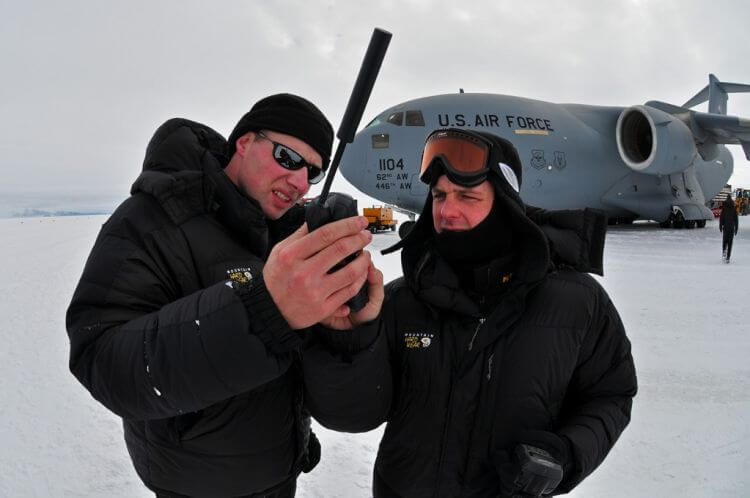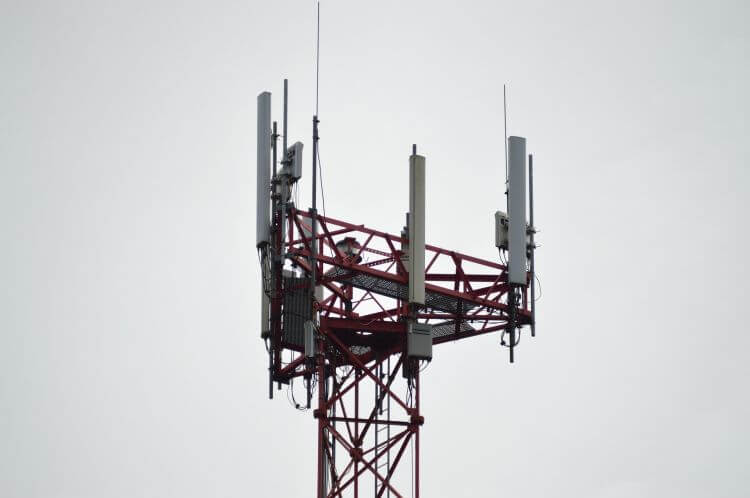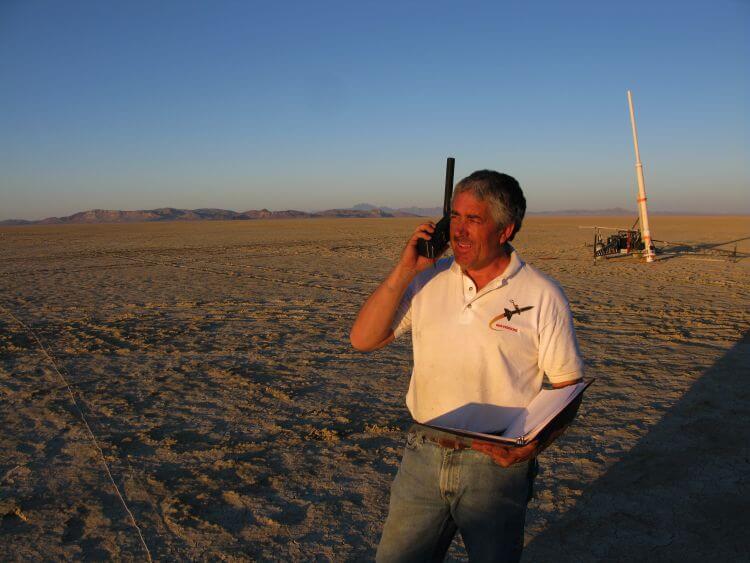
In the event of a cyberattack, would you be able to stay in touch with your loved ones? Proper communications gear is a must to be able to do this, and one of the best pieces of gear to help you along with this is to use satellite phones.
Brief History of Satellite Phone Service
The very first satellite phone network was made operational in 1997 by Iridium, the pioneer of Mobile Satellite Service, researched and developed by Motorola. This was a complete game-changer in the world of communications and was an historical moment. However, Iridium soon found its way into financial difficulties, declaring bankruptcy soon afterward.
Motorola’s proof of concept soon spawned several other satellite phone services though, most of which met with the same fate. The study of the history of sat phones is to become well acquainted with the lingo of bankruptcy.
However, some of these companies survived, and the first, Iridium, managed to pull through, becoming one of the largest and most respected names in the field of satellite phone technology.
Now, the consumer who is looking at a satellite phone to bolster his emergency communications ability has a wide range of sat phone products and companies to do business with, and it seems as if this is only growing as a form of comms as it becomes more mainstream and costs decrease.
How Satellite Phones Work
Satellite phones work by using satellites to send their signals from one user to another. At the risk of stating the obvious, that means you must be able to access that satellite for your information to be sent out.
You need line-of-sight access to the satellite. You can still use your satellite phone inside of a building or a vehicle, but it’s going to need an antenna mounted on the outside of the building or vehicle to work.
I’ve been able to get my GPS unit (which also connects to satellites) inside my vehicle before, so I think a satellite phone would have a good shot of still functioning in a car if it’s nearby a window, but for the best results, an external antenna is necessary.

What’s the Difference Between a Cellphone and a Satellite Phone?
The primary difference between a cellphone and a satellite phone is in how they connect with the end user. Cellphones use cell towers and satellite phones use satellites.
Let’s say Bob is using his cell phone to call his pal Larry. If Bob does this, what is happening is that his cell phone is sending information via the nearest cell tower, which in turn sends the information to Larry’s phone.
Cell towers are a necessity to use a cell phone.

Let’s say that Bob and Larry both have satellite phones though which they are using to contact each other. In this case, Bob makes the call, his information is sent up to a satellite in space, and then the satellite sends the information down to Larry’s satellite phone.
And yes, in case you were wondering, a satellite phone can make a call to a cell phone and vice versa. Here’s a link that will show you how to do that.
Can You Text with Satellite Phones?
Absolutely. Most of the satellite phones you’ll find out there not only can send and receive SMS messages but have a host of other smartphone-style features as well. GPS capability, internet connection, the ability to check social media, photo sharing, and more are all common features of the modern-day satellite phone.
What Satellite Phones Offer in Emergencies
Did you know that 80% of the planet does not have cell phone coverage? You may even have sections of your own home that don’t have cell phone coverage! If you’re somebody that lives in one of these areas, this can be a matter of concern.

What are you to do if you end up stranded on the side of the road with no cell phone coverage? If you’re hiking and end up injuring yourself, and there’s no cell coverage, how are you going to call for rescue?
Should there be a governmental shut down of all cell towers and the internet kill switch is hit, are you going to be able to contact your loved ones?
This is where a satellite phone really shines. You can end up with virtually 100% of the globe being covered (depending on the satellite phone and plan you choose), they still work in power outages, they can’t be turned off by anybody (unless somebody can turn off the satellites), and they are very difficult to monitor.
On that last point though, keep in mind that your signal can still be triangulated from a sat phone unless your phone uses signal scrambling. Even then, there’s always a chance it could be triangulated given enough time.
All these factors combined make for sat phones being a great boon to the prepper.
GEO vs LEO Satellite Phones
This is one of the chief differences you’re going to want to understand before you end up picking up your satellite phone. If you pick the wrong constellation orbit, you’re not going to end up with a sat phone that checks all the boxes on your list.
Let’s start with examining GEO constellations first…
GEO Satellite Phones
GEO stands for ‘geosynchronous satellite orbit,’ but you’ll also hear it referred to as ‘high earth orbit.’ GEO satellite constellations are composed of fewer satellites than LEO constellations and feature massive satellites in terms of data potential. It’s because of this large data capacity that these satellites are ideal for streaming services or other online needs that require large amounts of data to be sent.
However, there is a downside to GEO: there’s not as many of them. It’s because of this that there’s an increased risk you may not be able to access a satellite. The laws of thermodynamics still apply even in space, and entropy causes even satellite systems to malfunction, eventually. Should that happen when you need it most, you may be out of luck until the problem is resolved.
This means that should a single GEO satellite go down in a constellation, the likelihood that a large section of the globe won’t have satellite phone service is fairly high. Other satellites will likely still be in reach as well (it depends on where you’re at, of course), but this brings us to the second con of GEO sat phone systems: you may have to know where they’re located.
There’s a good chance you’re going to have to point your antenna in the direction of the satellite to be able to access it with a GEO sat phone. Are you good with navigating? Are you going to be able to determine where your cardinal directions are if you’re in an event when you must rely on a satellite phone?
The answer to that question is up to you.
If you were simply looking for a sat phone for more of a “base camp” style set up that’s going to stay in place, I think this would work fine. Figure out where your satellite is once, and you’re done. If you’re going to be on the move, though, you may want to consider the next option.
Low-Earth Orbit Satellite Phones
LEO stands for Low-Earth Orbit. These constellations contain an exponential larger number of satellites than do GEO constellations. They’re also not pinned directly above one geographic region as is a GEO satellite. A LEO satellite rotates around the earth, passing by much like an airplane would.
There are a few positives about this.
For starters, the sheer number of satellites in a LEO constellation means that if one satellite goes down (e.g., Space Force attack), you’ll still likely have other satellites in the area you can connect to. Sixty odd satellites over your head gives you a lot more redundancy than does twelve or less.
The fact that these satellites are constantly moving gives you another layer of protection here. If you get lost (let’s say you’re in a bad storm at sea), you may not have a clue which direction is north, and where you need to point your satellite phone to if you’re having issues with connectivity.
Just turn on the device, and you’ll be good to go once the connections are made. The satellites, should they be obstructed from connecting with your phone, from a mountain or whatnot, will likely be able to connect with you should you try again in the near future. This makes for a much more convenient experience.
If you’re going to be going on a mountaineering expedition, this is the style of satellite phone that I would want to take.
What’s the negative about LEO sat phone systems? It’s the slower speed of transmission. LEO satellites aren’t built to the capacity as GEO satellites, and as a result, they can’t stream or engage in other high-data transmissions/receptions as quickly as can GEO. If you’re simply going to be using your sat phone for SMS messages or for phone, this doesn’t really matter.
If you’re picking up a satellite phone for your business that’s about to engage in an Amazon expedition to send videos back to a lab in Atlanta, that’s a different story.
5 Best Satellite Phones for Emergencies
There are plenty of choices for the prepper looking to secure a satellite phone for emergency use. It’s easy to become quickly overwhelmed with the wide selection. This list might help as I’ve narrowed it down to just five, each unique in what it delivers.
BlueCosmo Inmarsat IsatPhone 2.1
Coming in at well under $700 is the IsatPhone 2.1. If you’re looking to utilize the Inmarsat constellation (which is a GEO constellation system), this is a great place to start. You get global coverage with this sat phone (as you would expect), and you can do just about anything with it that you would use a traditional cell phone for.
- Global Coverage: No Roaming Charges - Make and receive voice calls, SMS, track your position with GPS from anywhere on the globe.
- Complete Kit: Includes Inmarsat IsatPhone 2.1 satellite phone handset, Lithium-ion battery, International AC wall charger, Automobile DC charger, Holster with belt clip, Hands free earpiece, Lanyard, USB cable, USB thumb drive with documentation, Quick start guide, SIM card and 18 month warranty.
- Durable Design: Withstands dirt, dust and jets of water from every direction; IK04 shock resistance rating and an ingress rating of IP65; Operational temperature range of -20°C to +55°C.
- World Class Support: Get expert assistance from the BlueCosmo team for any satcom needs; Choose from various service options to fit your budget.
- Long Battery Life: 8 hours talk time and 160 hours standby; Lithium-ion battery provides longest lasting power for your satellite phone.
Voice calls, SMS messages, GPS capability – it’s all there. This is a tough phone as well, with an IP65 shock rating, water/dust resistance, and the ability to function down to -4 degrees Fahrenheit. You get a 18-month warranty, it comes with a SIM card, and there are a number of monthly payment plans available as well.
All of this combined, makes for a great sat phone for the money.
BlueCosmo Iridium Extreme Satellite Phone
If you’re looking for a satellite phone you intend to be using on a regular basis, then I would explore an Iridium phone. And if you’re looking for an Iridium sat phone, then you need to check out the BlueCosmo Iridium Extreme. This is a pricier phone, at a little over a grand, but the Iridium network is superb.
You have access to 66 satellites in that constellation, meaning you will always have coverage with zero antenna fuss whatsoever. Your standard battery of sat phone features are present here as well: voice, SMS texts, GPS capability, emergency SOS, and more.
- BLUECOSMO PREPAID SIM INCLUDED: Easily purchase and load Prepaid Airtime from BlueCosmo. No hidden fees. No activation charges. Visit the BlueCosmo website to easily purchase Prepaid minutes or extensions. Global minutes can roll-over if additional prepaid minutes are purchased and added prior to expiration. Outgoing SMS messages & tracking updates 1/10th minute charge, incoming SMS messages are free.
- GLOBAL COVERAGE: NO ROAMING CHARGES Make and receive voice calls, SMS, track your position with GPS or request help with the emergency SOS button from anywhere on the globe. Powered by a sophisticated global constellation of 66 cross-linked Low Earth Orbit (LEO) satellites, the Iridium network provides high-quality voice and data connections over the planet’s entire surface, including across oceans, airways and polar regions. Iridium is the only truly global satellite phone service.
- EVERYTHING YOU NEED WITH 18 MONTH WARRANTY: Iridium Extreme 9575 satellite phone handset, Lithium-ion battery, AC wall charger with international plugs, Automobile DC charger(CLA), Holster with belt clip, Hands free earpiece, Power & USB adapter, Power USB & External antenna adapter w/ TNC connector, Auxiliary magnetic mount antenna w/ 5' cable, USB cable, Quick start guide, User Guide, SIM card & 18 MONTH WARRANTY exclusively from BlueCosmo.
- MILITARY-GRADE TOUGHNESS: The Iridium Extreme meets US Military Standards 810F for resistance to: Dust, Shock, Vibration, Blowing Rain (and more). Highest Ingress (IP) Rating of all satellite phones at IP65. Includes a speakerphone and wind resistant microphone. A diamond tread, tapered grip gives it superior in-hand ergonomics.
- WORLD CLASS SUPPORT AND SERVICE: When you purchase your Iridium Extreme satellite phone from BlueCosmo, you get a team of professionals who have been deploying satellite communications around the world for the most demanding customers since 2003. Our Iridium service options can fit any budget and we can get you up and running for all your critical satcom needs.
This is another sat phone that’s built like a tank as well. It’s rated to IP65 for ingress and has passed the US Military standards 810F for dust, shock, vibration, and blowing rain.
It’s a fantastic phone that can handle the toughest tasks with ease.
Globalstar GSP-1700
Right around the $500 mark is this sat phone. While it doesn’t have as many features as some of the more expensive sat phones out there, this can prove to be an economical way to keep your family in touch with one another should there be some type of grid down event.
- Ergonomic design and lighted keypad
- Long-life battery: 4 hours talk time, 36 hours standby
- Backlit color display optimized for outdoor daytime viewing
- 5.3"H x 2.2"W x 1.5"D and 7.05 oz
The catch is that this phone has been discontinued. You can still find them available for purchase in aftermarkets, but they’re going to be pre-used. If you’re ok with that, you can typically save an additional $200, meaning you can get started in sat phone technology with a $300 device.
The Iridium 9555
For right around a grand, this sat phone will give you everything you need. You’ll get access to the Iridium network, it has a 4-hour talk time battery life, it’s built like a tank, and it works all the way down to 14 degrees Fahrenheit.
If you live in a colder climate such as the barren snows of Maine, then this sat phone is probably not going to be rated for as cold of a temperature as you would like it.
Garmin inReach SE+
If you’re looking for as inexpensive of a means to get involved with sat phones, I think this is it. You’ll only be able to send text messages with one of these, but it will be sent via the Iridium satellite constellation, meaning you’ll have global coverage.
- 100% global Iridium satellite coverage enables two-way text messaging from anywhere (satellite subscription required)
- Trigger an interactive SOS to the 24/7 search and rescue monitoring center
- Track and share your location with family and friends. Display type : Transflective color TFT
- Pair with mobile devices using the free Earthmate app for access to downloadable maps, U.S. NOAA charts, color aerial imagery and more
- inReach Explorer+ device adds preloaded DeLorme TOPO maps with onscreen GPS routing plus built-in digital compass, barometric altimeter and accelerometer
It only costs around $300 to pick one of these up as well. Garmin is a superb brand for anything GPS-related, and you do get GPS capability with this device as well.
Downsides of Satellite Phones
There are a few downsides to satellite phones, but they don’t differ that much from a conventional cellphone.
Cost
I think that what has long been considered the largest downside of a satellite phone has gradually waned. Ever since their creation, the main downside of using a satellite phone has been the cost. To purchase a sat phone (as of this writing) costs roughly a grand. In the early 2000s, when purchasing a regular cell phone was likely to put you back $50-$200, this was unheard of.
Now though, if you want to purchase a new iPhone or Droid, it’s going to cost roughly a grand as well (often more). Yet, the price of buying a satellite phone has remained fairly constant. There are even sat phones you can find out there now that are in the $700 range.
The main difference is in the price of the phones plan. If you pick up a plan for your cell phone, you’re looking at spending anywhere between $70-$200/month for unlimited data. You’ll be able to call, send text messages, use GPS, and access the internet for that one flat fee.
Satellite phones are much more expensive than that when it comes to their service plans. Not as many people have satellite phones and it’s incredibly expensive to keep satellite constellations properly maintained. As a result, sat phone plans are going to be a big hit in the wallet compared to your traditional cell phone plan.
However, if you’re keeping your phone around for emergency purposes, I still don’t think these are as bad of a price as they used to be. Consider Blue Cosmo’s plan to use the Iridium satellite network.
It’s roughly $110/month. That’s less expensive than my monthly phone bill! You receive free incoming calls and texts and global coverage with that pricing too. The catch is that you only get 150 minutes of outgoing calls/month with that plan. Once you exceed that, you’re looking at around $1.50/minute being added to your bill.
Want to call another satellite phone that’s not in the Iridium constellation? Then you’re looking at around $11/minute. This is where satellite phones quickly grow expensive.
If you’re simply using them to send text messages after a disaster, I think the cost is very agreeable. If you’re going to be doing a lot of voice calls, you need to be prepared for a big bill to potentially find its way to you.
Satellite Vulnerabilities
And that brings us to another point with satellite phones I think is worth discussing: what happens if your satellite phone company goes down?
If we’re talking local power outages, your sat phone will still work provided you can keep it powered up. In the event of a cyberattack on Iridium, would your sat phone still work though? That’s something to ponder over. While I don’t think this is a likely situation (Iridium is used by people throughout the world – even those who are hostile to the US), it is something to consider.
There are no guarantees.
Another reason one may want to avoid a satellite phone is that they are very easy to determine the location of the user with. For example, let’s say you were trapped in Ukraine and trying to get a call out to your family in England. Just turn on your satellite phone, right?
Wrong. Satellite phones actively give out their current location to satellites as they make their connection. This can easily be intercepted by state-level forces, and the result (in the case of military armed conflict) would be an artillery shell quickly finding its way to ground zero.
For somebody who is concerned about their location being tracked, this is something to take into consideration.
Summary
A satellite phone can be a lifesaving tool, but being such a fringe area of technology, it can be rather intimidating to delve into the world of sat phones at first. There’s simply so much knowledge one must understand beforehand that the number of variables available can grow to be confusing.
Here is what I would recommend:
If you’re wanting to have high-speed internet where you’re at in the event of a grid outage, I would recommend looking into a sat phone with Inmarsat. The IsatPhone 2.1 we’ve linked to above would be a great option for such.
If you live in a very cold climate where the chance your fingers aren’t going to want to type a long text message is very real, yet you want sat phone capability, I would look at the Iridium Extreme. You’re either far north or far south, and you get better coverage there with Iridium than you do Inmarsat. The Iridium Extreme can handle some pretty cold temperatures as well.
If you’re looking for as bare bones of a model as you can get on a budget, then I would pick up the Garmin inReach SE+. This will let you and your family across the country stay in touch with each other post-disaster with some pre-paid plans/SIM cards and with minimal fuss.
But, hey, that’s my take. What are your thoughts on sat phones? Are there other models you would recommend? Have you tried any of the above? Let us know in the comments below!





